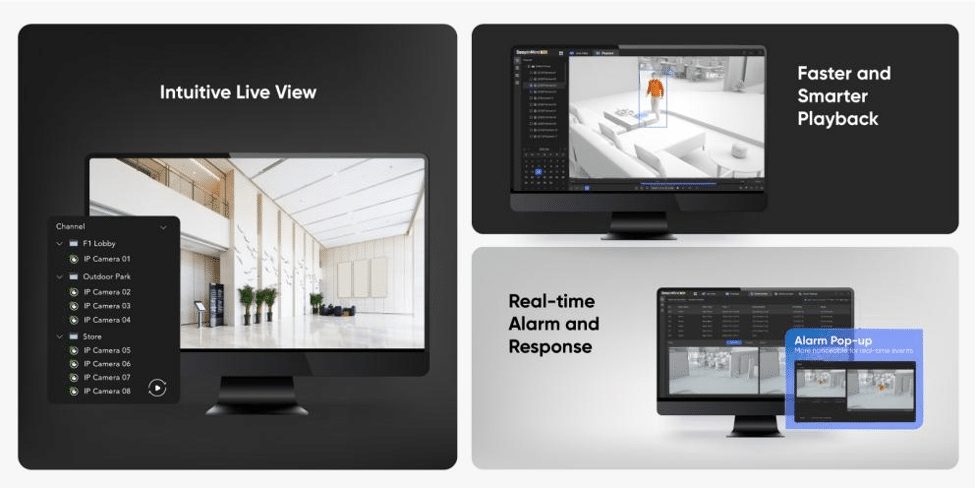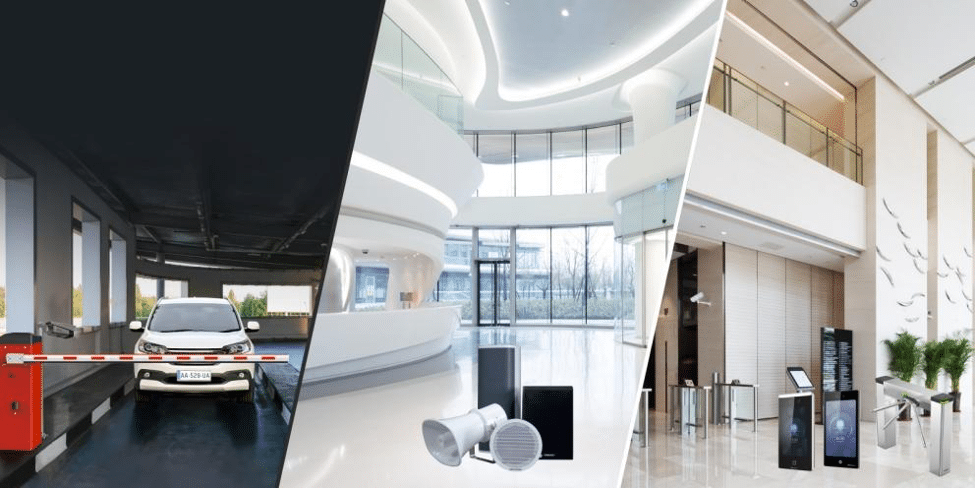A Network Video Recorder (NVR) is designed for video security applications. It facilitates remote visual monitoring and administrative control of IP cameras remotely. NVRs have seen increasing adoption in modern video security solutions, fulfilling demands for centralized management of IP-based camera networks. This is because they provide many key advantages. They offer a cost-effective solution for monitoring large sites versus independent systems. Understanding NVRs and their effective use is key for optimized video security systems.
Understanding Network Video Recorder Systems
Network video recorder systems centralize video protection and storage. IP cameras transmit video over the network to an NVR device. There, the incoming video is compressed to optimize storage usage on the NVR’s built-in drives or networked storage. Organizations benefit from centralized management and access to live and recorded footage via the NVR’s web-based interface from any location on the network. NVR systems typically have varying numbers of channels, such as a 16-channel NVR that can process and record video streams from up to 16 cameras simultaneously. This flexibility makes NVRs ideal for supporting security camera deployments of all sizes.
The main components of a network video recorder system include:
1. NVR Device
This device acts as the centralized recording and management server that processes incoming video from cameras and stores footage. It features a built-in operating system and video management software.
2. IP Cameras
These connect to the network video recorder via the network and transmit live video streams for recording and video protection purposes.
3. Network Infrastructure
A robust network infrastructure is required for the NVR system to function reliably across multiple devices. Switches route camera video streams to network video recorders over Cat5/Cat6 cabling, while routers provide connectivity to the LAN and internet. Together, these components form the backbone, enabling remote access and transmission of live and recorded video feeds.
Advantages of NVR Systems
Network video recorder systems offer various benefits over traditional recording setups. These include:
1. Remote Access and Monitoring Capabilities
These allow security teams to monitor sites from anywhere rather than being tied to a central control room. Video can be streamed live to mobile devices like smartphones, providing security on the go. Remote access also facilitates convenient retrieval of footage for investigations without having to locate recordings from individual cameras.
2. Integration with Other Security Systems
An integrated system creates a unified smart building platform. Access control systems can trigger cameras when doors are opened. Motion detected on cameras can trigger alarms. Integrated building management allows video to be used beyond security. Emergency events across systems can simultaneously alert multiple teams for faster response.
3. Scalability for Adding More Cameras
Additional IP cameras with supported standards can be installed without upgrading other equipment. Larger storage can be seamlessly added as retention requirements increase.

Best Practices for Managing Network Video Recorder Systems
To ensure optimized performance, operators need to follow proper management practices for network video recorder systems. The following are some recommendations:
1. Regular Maintenance and Firmware Updates
These should be done promptly, as recommended by the manufacturer. Updates ensure technicians benefit from the latest improvements and fixes to the system’s capabilities. Periodic version checks against the manufacturer’s website allow downloading relevant updates to keep systems running optimally.
2. Optimizing Storage Space and Recording Settings
Recording schedules and quality levels can be tailored to each camera based on typical activity levels to minimize wasted space from continuous recordings of empty areas. Motion detection and adaptive recording help adjust quality during motion to further optimize usage.
3. Securing the NVR System Against Cyber Threats
Unique passwords containing letters, numbers, and symbols are mandated for all administrative and user accounts, and passwords should be changed periodically. Network segmentation isolates video data from general office networks. Firewalls can filter unwanted inbound and outbound traffic.
4. Implementing Backup and Redundancy Measures
Automated backup software ensures footage is copied to separate physical or network drives. Redundant storage strips or servers can take over recording if primary ones fail. Location resilience across sites or in the cloud protects against localized disasters or malicious attacks. Tapes and disks provide various options for retention needs.

Conclusion
Overall, network video recorder systems provide a versatile and cost-effective solution for centralizing security camera feeds and recordings across large distributed sites.
They offer a cost-effective and scalable solution for managing large sites, providing remote access and monitoring capabilities through web-based interfaces. With their numerous advantages and effective management practices, NVR systems remain indispensable tools for organizations seeking robust video security solutions.

